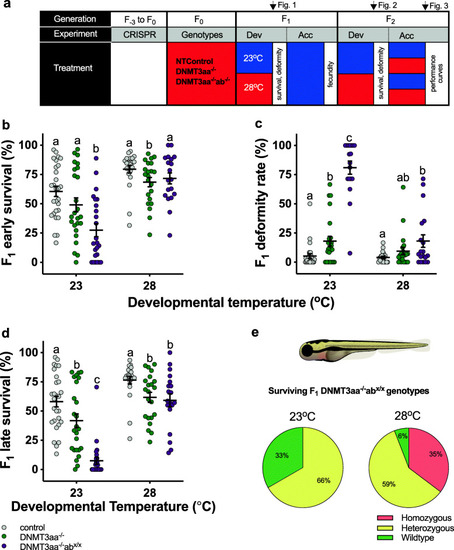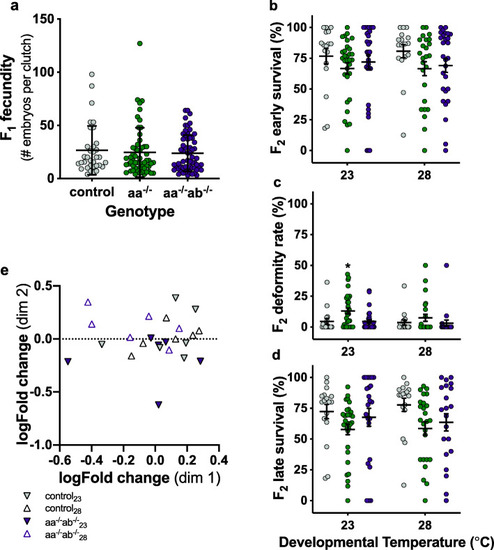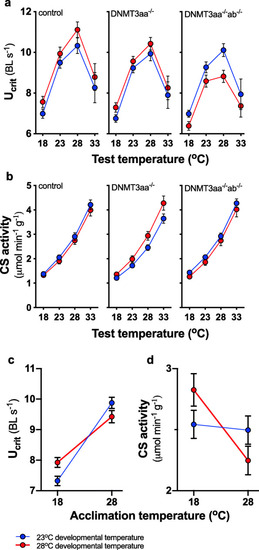- Title
-
DNA methyltransferase 3a mediates developmental thermal plasticity
- Authors
- Loughland, I., Little, A., Seebacher, F.
- Source
- Full text @ BMC Biol.
|
DNMT3a mediates developmental plasticity. We used CRISPR/Cas9 to produce single (DNMT3aa−/−) and double (DNMT3aa−/−ab−/−) knock-out lines plus a no-template control (control) ( PHENOTYPE:
|
|
Parental acclimation rescues offspring survival. Fecundity of F1 fish ( PHENOTYPE:
|
|
DNMT3a modulates thermal performance curves. A significant interaction between genotype and developmental temperature manifests as a progressive decline in swimming performance (Ucrit) ( PHENOTYPE:
|



